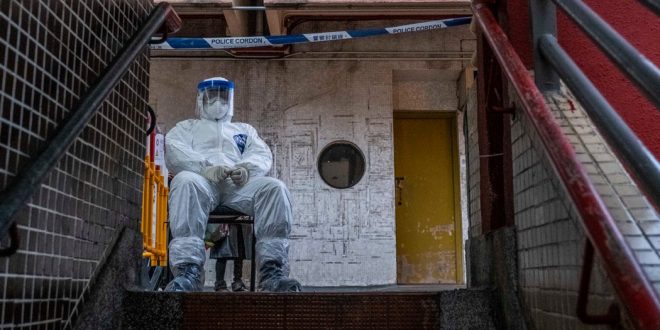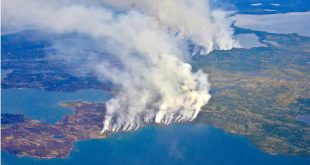The death toll from the coronavirus reached a new high on Wednesday even as Chinese officials said the infection rate showed signs of slowing.
Right Now
Rate of new cases begins to fall in China even as death toll rises.
Image

World health officials now have a name for the coronavirus illness.
The World Health Organization on Tuesday proposed an official name for the illness caused by the new coronavirus: COVID-19. The acronym stands for coronavirus disease 2019, as the illness was first detected toward the end of last year.
The director general of the World Health Organization, Tedros Adhanom Ghebreyesus, noted that the new name makes no reference to any of the people, places or animals associated with the coronavirus. The goal was to avoid stigma.
Under international guidelines, the W.H.O. “had to find a name that did not refer to a geographical location, an animal, an individual or group of people, and which is also pronounceable and related to the disease,” he said on Twitter.
The death toll from the coronavirus epidemic is continuing to climb, Chinese officials said on Wednesday. Nationwide, 97 new deaths and 2,015 new cases emerged in the previous 24 hours, the national health authorities said.
Deaths surpass 1,100, but rate of infection begins to fall.
The death toll from the coronavirus reached a new high on Wednesday even as Chinese officials said the rate of new infections showed signs of slowing.
Nationwide, 97 new deaths and 2,015 new cases emerged in the previous 24 hours, the national health authorities said.
Tuesday’s newly confirmed infections represented the lowest in a single day since Jan. 30, when there were 1,982 new confirmed cases.
The new figures brought the total number of deaths in China to at least 1,113. And the total number of confirmed cases rose to 44,653. Most of the newly reported deaths, 94, occurred in Hubei Province, the heart of the outbreak.
There are 393 COVID-19 cases outside China, in 24 countries.
Japanese official tests positive after surveying cruise ship passengers.
The coronavirus has jumped from ship to shore, Japan’s health ministry said Wednesday, after an employee of the country’s health ministry tested positive for the illness after surveying passengers aboard a cruise ship being held under quarantine in the port of Yokohama.
Additionally, another 39 of the more than 3,600 crew and passengers have also tested positive, bringing the total number of cases to 175.
The ship, known as the Diamond Princess, has been under quarantine for a week, after a passenger who disembarked in Hong Kong was diagnosed with coronavirus.
Japanese authorities have been slowly moving those diagnosed with the illness off the ship and to hospitals. But on board, many passengers are complaining of lack of information and access to necessary medicines.
Outbreak disrupts supply chains, and the effects ripple across the globe.
The coronavirus outbreak in China has generated economic waves that are rocking commodities markets and disrupting the supply networks that act as the backbone of the global economy.
In Australia, after hauling hundreds of thousands of tons of iron ore to China, returning freighters can face a 14-day quarantine.
BHP, which has headquarters in London and Melbourne, Australia, and is one of the world’s largest copper mining companies, has been in talks to possibly delay shipments to Chinese ports.
And from Qatar to Indonesia, exporters of liquefied natural gas face the prospect of disrupted shipments after a crucial importer in China is turning back deliveries.
“We’re seeing a rippling out,” said Ed Morse, global head of commodities research at Citigroup in New York. “And we don’t see it stopping.”
Prices for key industrial raw materials such as copper, iron ore, nickel, aluminum and liquid natural gas have plummeted since the virus emerged. Countries that export these goods at high rates, including Brazil, South Africa and Australia, are near their lowest levels in recent memory.
And manufacturers, mining companies and commodity producers of all stripes are weighing whether they will be forced to cut back on production for fear of adding to a growing inventory glut.
Reporting and research was contributed by Amber Wang, Zoe Mou, Albee Zhang, Yiwei Wang, Claire Fu, Amy Qin, Sui-Lee Wee, Nicholas Bogel-Burroughs and Matt Phillips.
 The Argus Report Read about it!
The Argus Report Read about it!





